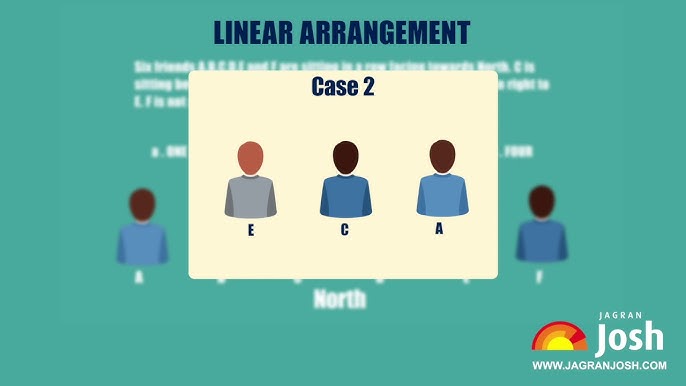Solving puzzles often feels like cracking a secret code, especially when it comes to seating arrangements. These problems test both reasoning ability and time management under pressure. Without a sharp strategy, students might spend too much time arranging people or items based on vague or overlapping clues.
Linear arrangement questions, in particular, challenge candidates to pay attention to detail. The placement of each person often hinges on subtle directions like “to the right of,” “between,” or “immediately next to.” With focused observation, these clues reveal clear positions in the row. This article explores how to uncover such hidden cues through observation, practice, and smart deduction.
Focus on Directional Clues from the Start
Each clue in a linear sequence tells a small part of the full story. The first step is identifying directional terms. For instance, phrases like “facing north” or “to the immediate left” can significantly alter a person’s position. Confusing these directions often leads to incorrect assumptions, so careful reading is essential.
When dealing with two-way facing problems, direction reversals should be noted clearly. This helps avoid placing someone on the wrong end of the arrangement. It’s also important to visualize left and right based on the subject’s facing direction, not the reader’s viewpoint.
Begin with Confirmed Placements First
Some clues offer definite placements, such as “A sits at one of the ends” or “B is second from the left.” These clues give concrete starting points and should be prioritized. These help establish a reliable framework for other conditional clues. By placing certain members first, candidates avoid working with multiple vague possibilities at once.
It reduces confusion and creates logical anchors. If these placements are ignored, the rest of the puzzle may spiral into unnecessary complexity. Even a single certain position can simplify the setup significantly. Once done, the rest of the clues can be cross-checked against that base.
Recognize Repeating Structures and Phrases
Certain phrases tend to reappear in multiple questions across test sets. Clues like “between A and B” or “immediate neighbor of” form the backbone of many arrangements. Identifying these patterns helps recognize clue categories and predict how they fit into the setup.
- “Exactly between” clues: These always indicate equal distance from two others.
- “Immediate neighbor” clues: These restrict placement to adjacent positions.
- “To the right/left of” clues: These create direct relative positions.
Memorizing how these patterns work reduces hesitation during the exam. Recognizing repetition trains the mind to jump directly into an arrangement without trial and error.
Avoid Diagram Overcrowding
One common mistake is cluttering the initial diagram with uncertain placements. Drawing multiple people without confirming their exact positions can cause contradictions later. It is better to leave spaces open until clues become clearer. Use placeholders when needed, such as small marks or letters, to keep track of uncertain members.
This keeps the layout clean and flexible. Rubbing out or redoing entire setups can waste precious time during an exam. Always start with a light sketch and fill in positions only when sure. A neat layout improves readability and reduces rechecking errors.
Practice Consistently with Linear Arrangement Questions PDF
Exposure to a variety of seating puzzles sharpens recognition skills. Practicing different patterns builds confidence in solving new arrangements quickly. Using PDFs focused on this topic allows aspirants to access structured sets in one place.
- Choose PDFs with mixed-difficulty problems to cover a wider range of challenges.
- Set a timer while solving to build speed and precision.
- After solving, review mistakes and note which clue patterns were misunderstood.
Over time, repeated practice trains the mind to quickly identify common and rare clue types. This constant exposure is one of the most effective ways to grow familiarity with the logic behind each puzzle.
Linear arrangement questions reward those who train their eyes to notice detail and their minds to link information quickly. Developing this pattern recognition is not instant, but with consistent practice and strategy, it becomes second nature. With methodical practice, accurate setups become easier and more instinctive.

